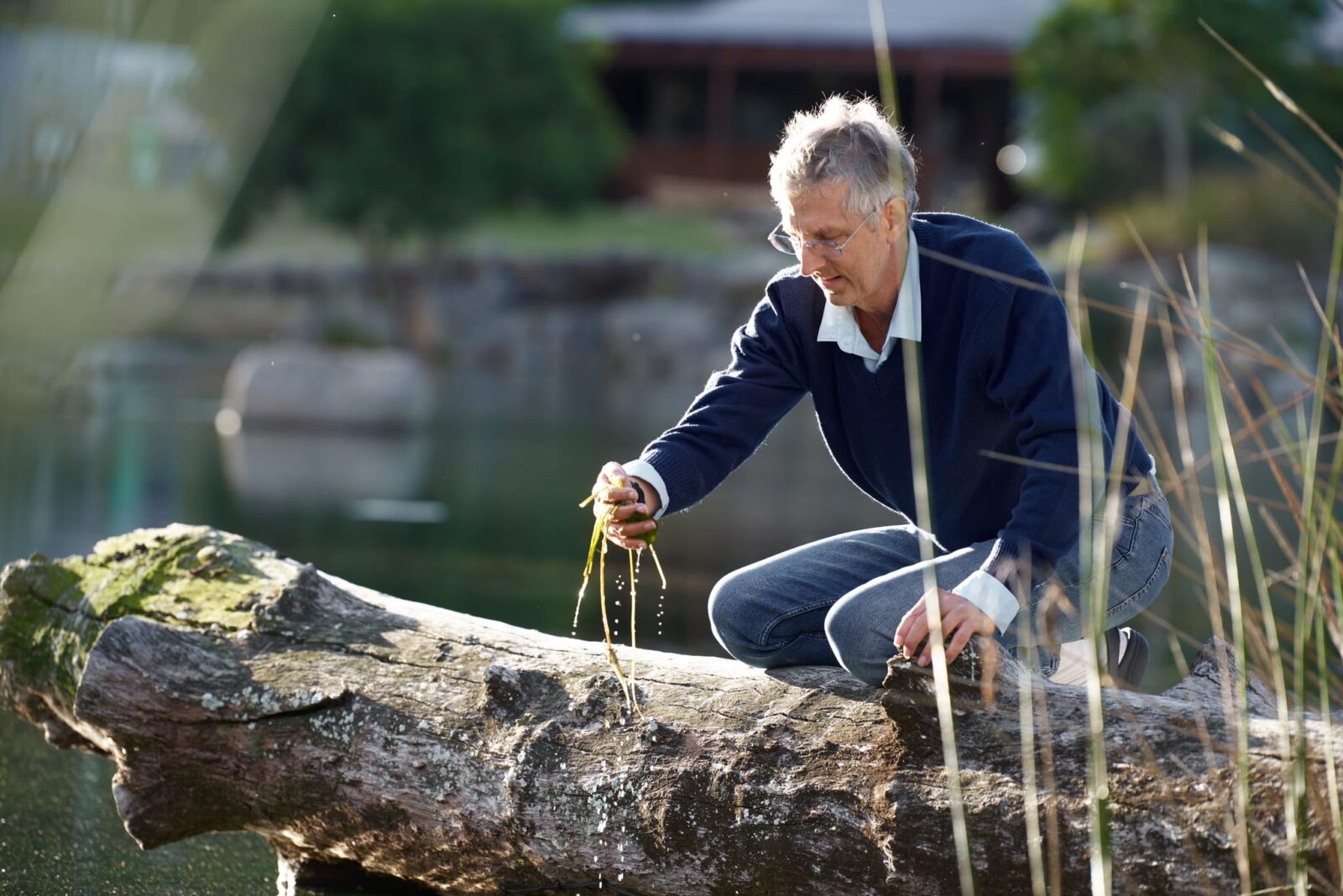How Isabelle Duff aims to drive genetic innovation in agriculture
 NATIONAL CHALLENGES AND OPPORTUNITIES / Monday, 11 September 2023
NATIONAL CHALLENGES AND OPPORTUNITIES / Monday, 11 September 2023
Innovative ocean platform grows seaweed and sinks carbon

With a goal of achieving “the three Rs” of reducing emissions, removing greenhouse gases and repairing the climate, the Climate Foundation has developed an innovative technique for cultivating seaweed to regenerate lost kelp forests and sequester carbon in the ocean’s depths for hundreds of years.
As farmers and land managers across the globe look to the land to store carbon to help address climate change, a team of researchers has turned their eyes to the vastness of the ocean and the versatility of a simple seaweed.
The Climate Foundation has built and deployed several small platforms off the Coast of the Philippines to cultivate kelp, a rapidly growing seaweed that absorbs carbon but is also used for food, animal feed and fertiliser.
Founder and Executive Director Dr Brian von Herzen said like leaves falling from a tree, seaweeds constantly shed a portion of their biomass during growth meaning carbon can be sequestered naturally.
“About a quarter of the seaweed falls off the platform during growth and sinks 1000 metres a day to the abyssal sea floor where it remains for centuries,” Dr von Herzen said.
“Anywhere with water depth of greater than 100 metres is open to this form of sustainable farming or roughly 100 million square kilometres of ocean.
“In Australia, it could be deployed from the tip of Tasmania to the Cape York Peninsula to Western Australia, and over 300 kilometres out to sea. The area of water in Australia’s Exclusive Economic Zone rivals the land area, so it’s enormous.”
Rising and falling with the sun
The research team, which received funding from AgriFutures Australia’s Carbon Initiative Program, has developed a platform that submerges the lines of seaweed into a deeper layer of the ocean in a process called deepwater irrigation.
“At sunset we lower the platform down where it is marinated in the higher-nutrient cooler waters, and it absorbs nitrate and phosphate all night long,” Dr von Herzen said.
“At sunrise, we lift the platform back to the surface where it absorbs sunlight and carbon dioxide in the top metre of the sea.”
Rates of carbon storage
The project is aiming to demonstrate at least 30 tonnes of carbon fixation per hectare per year, with early results showing as much as 80 tonnes per hectare per year is possible.
“That carbon fixation represents the amount of carbon that is fixed by the seaweeds, and we can document the percentage that falls off the platform and sinks which can be in the 20 to 40 per cent range depending on the species and conditions,” Dr von Herzen said.
In addition, the team periodically harvests some of the kelp, which has the potential to help address food security for a growing world population and the need to reduce the use of synthetic nitrogen in agriculture.
“Seasol is a great example with a 50-year history in Australia of using temperate seaweeds to provide excellent supplements for horticulture,” he said.
“Broadacre crops can also benefit with potentially 20 per cent lower application of nitrate fertiliser, in an age where the price of fertiliser has skyrocketed in recent times.”
The next steps
While the process is currently expensive and labour-intensive, with the platform needing to be manually raised and lowered every day, the team is investigating automation as a cost-saving measure and expects savings to flow when the technology is scaled.
“We think by the time we build a dozen hectares we will be below $US1million a hectare capital cost,” Dr von Herzen said.
“By the time we build 1000 hectares we expect to be below $300,000 and by the time we get to a million hectares we could be below $30,000 per hectare.”
The project, which has a goal of completing the first hectare in the next 12 months, has already attracted the interest of investors and sustainability experts, winning a Milestone Award in the XPrize for Carbon Removal, and in May was one of the five finalists in the Singapore Liveability Challenge.
“AgriFutures invested early in this technology, and we have now demonstrated its carbon potential,” Dr von Herzen said.
“This is about the future. We’ve got to get to net zero. Beyond that, we need to start drawing down the 2,300 gigatons of carbon dioxide we’ve emitted over the past few centuries, and this is a technique for doing that.
“It’s a triple bottom line – food security, ecosystem biodiversity and carbon balance.”
Click to download the report here.
Click to review the full Carbon Initiative Program research findings here.
Media enquiries:
Matt Wordsworth
0404 029 241
Latest News
-
How Isabelle Duff aims to drive genetic innovation in agriculture WORKFORCE AND LEADERSHIP / 11.09.23
WORKFORCE AND LEADERSHIP / 11.09.23 -
AgriFutures Australia welcomes new Chairman CORPORATE / 11.09.23
CORPORATE / 11.09.23 -
Protecting Australia's beekeeping future through smart traceability HONEY BEE & POLLINATION / 11.09.23
HONEY BEE & POLLINATION / 11.09.23 -
Meet your future agronomists: The five Horizon Scholars getting a career head start WORKFORCE AND LEADERSHIP / 11.09.23
WORKFORCE AND LEADERSHIP / 11.09.23






